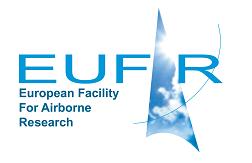Project

AROMAPEX- APEX flights for the AROMAT-2 activity
Abstract
The AROMAT campaign was held in Romania in September 2014 to test newly developed airborne instruments dedicated to air quality in the context of satellite validation. In particular, two airborne imaging DOAS systems were operated, namely the AirMAP from Uni. Bremen and SWING from BIRA, respectively from the FUB Cessna and from a flying wing UAV (Uni. Galati-Reev River Aerospace). These instruments revealed the NO2 horizontal distributions in the exhaust plume of large power plants near Craiova. The AirMAP/Cessna could also be operated above Bucharest and map the whole city. These two geophysical targets (Bucharest and the power plant) are visible in satellite data (OMI) but present different characteristics: the former is a large extended source with moderate NO2 columns (about 1x1016 molec/cm2), the latter produces very dense and localized plume (about 1x1017 molec/cm2). All airborne instruments were operated successfully during AROMAT, nevertheless, several lessons were learned that called for a follow-up and improved experiment. In particular, it appears scientifically interesting to add a second airborne imager from a manned aircraft. This would increase the possibility of measuring satellite overpasses, which were limited in the two weeks of AROMAT-1 due to weather conditions and technical issues.
The objective of this EUFAR project is to include the APEX instrument in this AROMAT-2 campaign, which is supported by ESA. APEX is mounted onboard the DLR Do228 aircraft. It will be set in unbinned spectral mode, to map the tropospheric NO2 columns above the same targets as AROMAT-1. The possibility to measure NO2 from APEX has already been demonstrated over Zurich [4]. Moreover, BIRA and VITO, part of the AROMAPEX consortium, are involved in a national project to perform similar APEX measurements over the large Belgian cities.
The objectives of the AROMAPEX experiment consists in :
(1) Operating APEX and AirMAP in formation above the same area in a reasonably short time interval. This is the first opportunity to intercompare two different airborne trace gases imagers and to evaluate their respective performance and limitations. Note that the SWING-UAV measurements will also be compared with APEX and AirMAP, but they suffer from two practical limitations compared to measurements from a traditional aircraft: the area that can be covered is smaller with the UAV and this platform will not be allowed to fly above Bucharest.
(2) Flying the two aircraft in different locations and times to increase the area covered and adapt the flight schedule to the overpasses time of two air quality space borne instruments (OMI, GOME2) in the same day. This will enable us, beside the comparison of APEX and AirMAP with satellite data, to study the diurnal variation of NO2.
(3) Operating the two aircraft above the power plant, but with the AirMAP set in its UV mode, which is optimal for the detection of SO2. We have already detected elevated levels of SO2 in the plant plume during AROMAT-1. These combined measurements will reveal accurately the SO2 and NO2 columns in the same plume.
The collected airborne dataset will be compared with coincident UAV based observations and ground-based measurements, including car-based DOAS data, a Pandora system, and NO2/SO2 cameras.
Details
| Keywords: | EUFAR, APEX |
|---|---|
| Previously used record identifiers: |
No related previous identifiers.
|
Related Documents
| AROMAPEX project documentation |
| EUFAR Web page |
